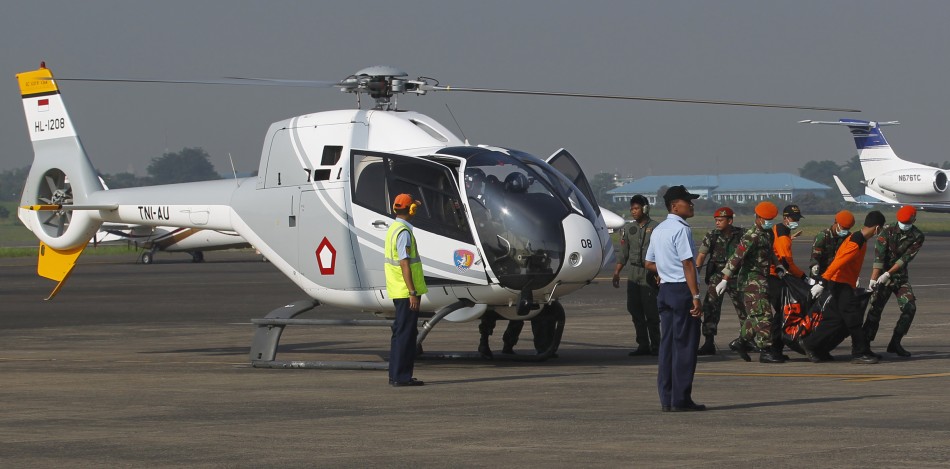Russian Plane Crash: Rescue Teams Begin Retrieving Remains [PHOTOS]
Indonesian search and rescue teams started retrieving remains of the dead at the crash site as the region witnessed comparatively clearer weather on Saturday.
Helicopters were able to bring at least four body bags with remains to the capital, Jakarta, on Saturday morning, according to an Associated Press report.
The forensic experts would sort through the remains and take the DNA samples to identify the victims.
However, the investigators were not able to locate the black box of the ill-fated plane.
"We also have deployed a team to find the black box, but so far it had yet found," the AP quoted search and rescue agency spokesman Gagah Prakoso as saying.
The Sukhoi Superjet, Russia's first post- Soviet civilian jet, crashed on Wednesday after it slammed against the Mount Salak.
Search operations are conducted by the rescue teams with one team climbing up the mountain from the foot and the other climbing down from the top. But the major challenge to the rescuers is the difficult terrain with thick fog surrounding the top of the mountain during the major part of the day.
The search and rescue teams including soldiers, police and volunteers used ropes and hoists to climb the vertical slopes of the mountain to reach the crash site.
The low visibility of the terrain, sometimes as low as 5 meters (15 feet), is restricting the helicopters to reach the site.
All the 45 people aboard the ill-fated Superjet-100 including the representatives from local airlines and journalists were died in the tragedy.
They could cover only 21 minutes of the total 50-minute demonstration flight which is intended to revive the aerospace industry of Russia.
The plane disappeared from the radar after the Russian pilot and co-pilot sought permission to drop from 10,000 feet to 6,000 feet (3,000 meters to 1,800 meters).






© Copyright IBTimes 2025. All rights reserved.



















